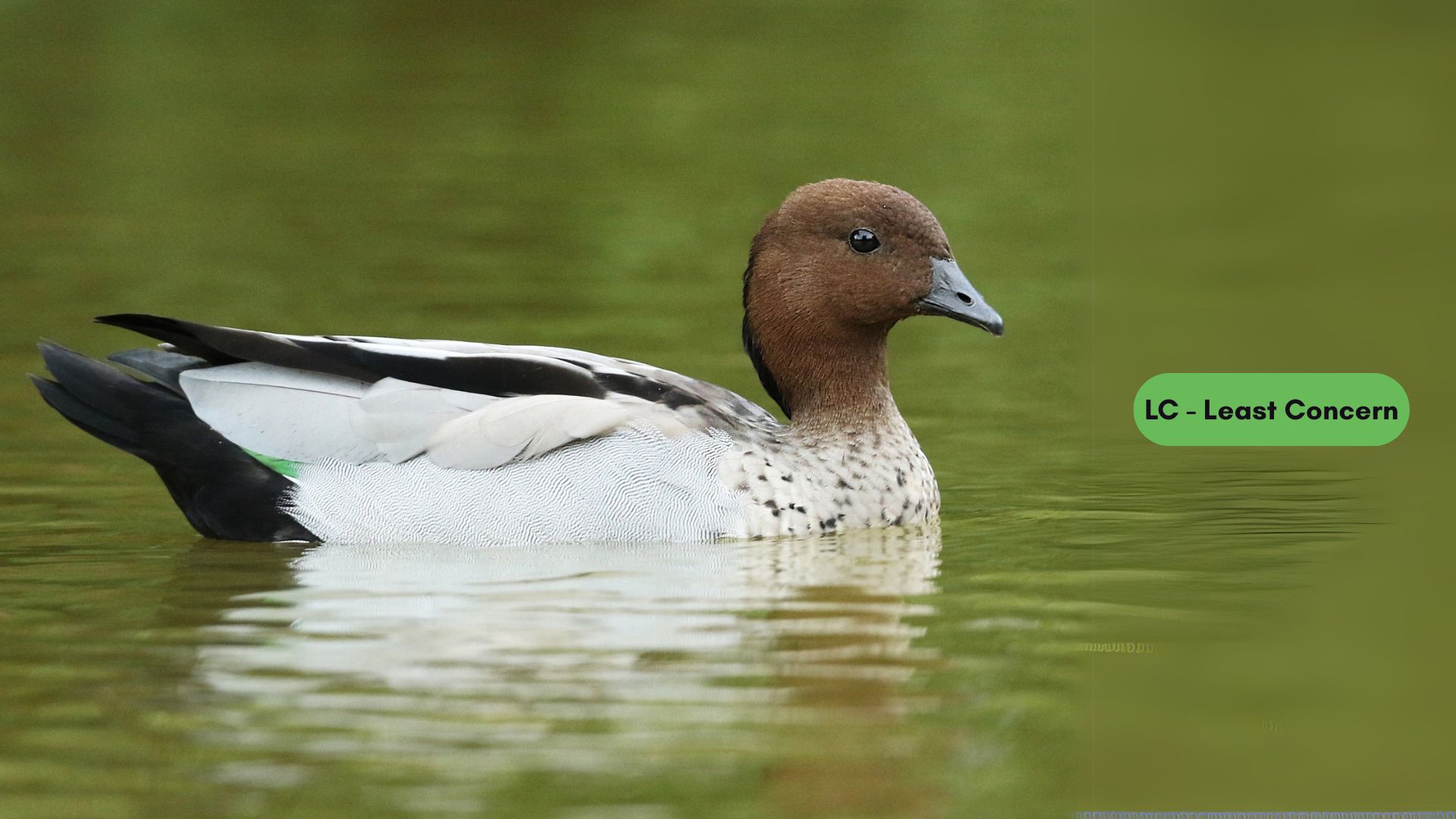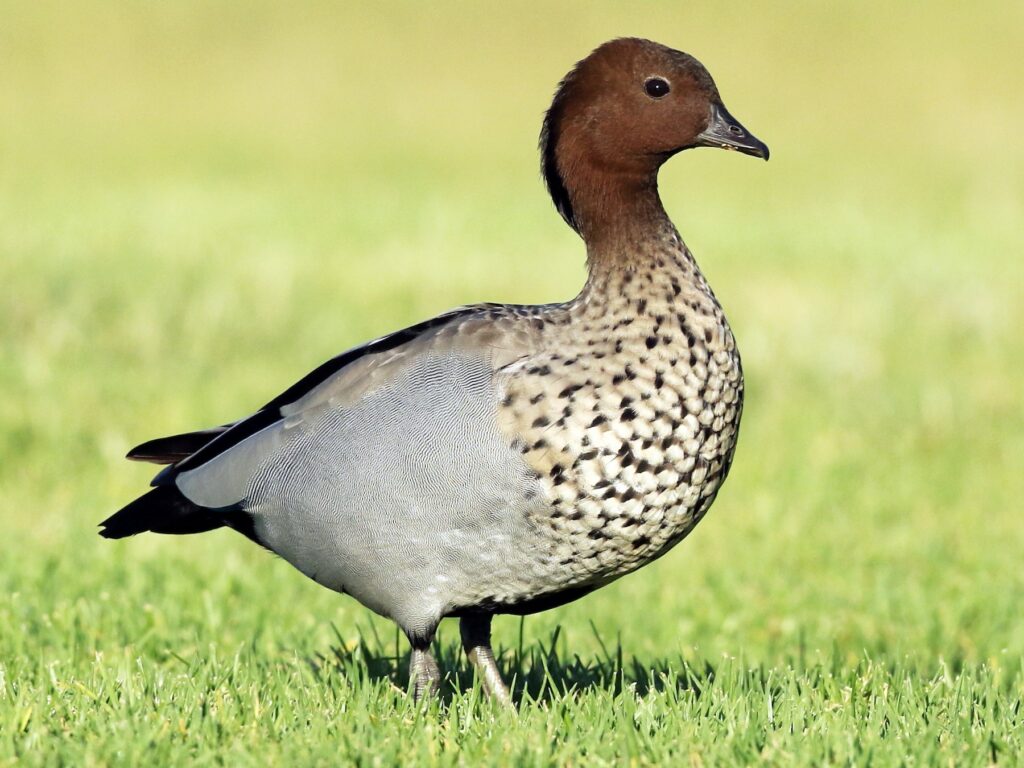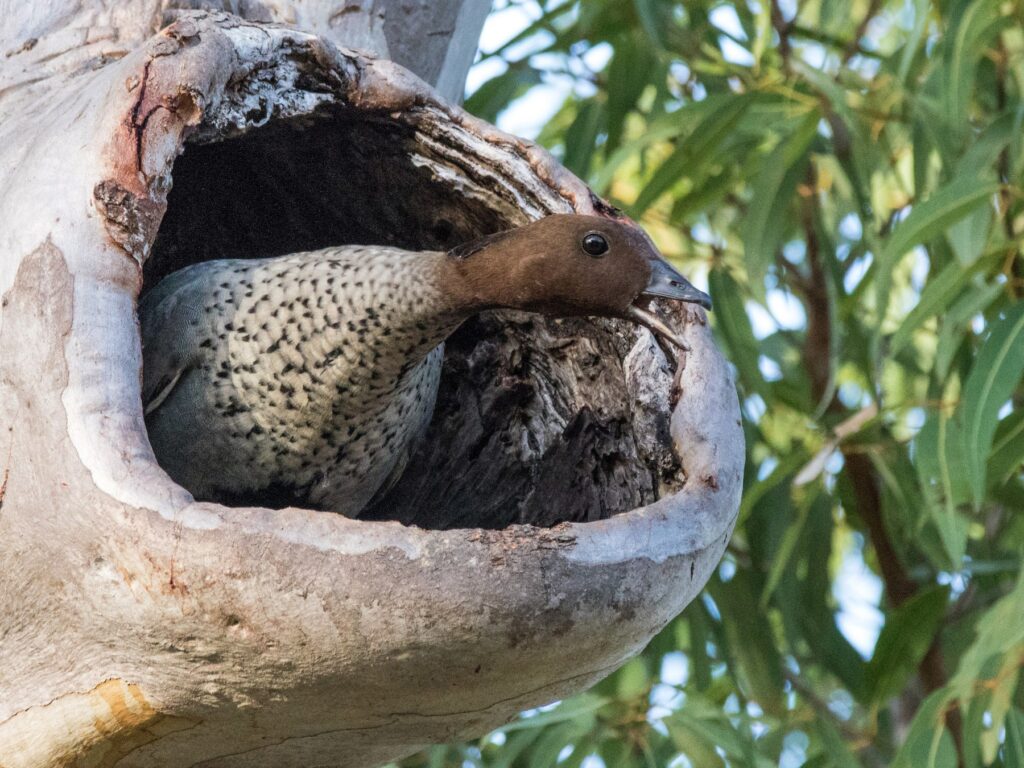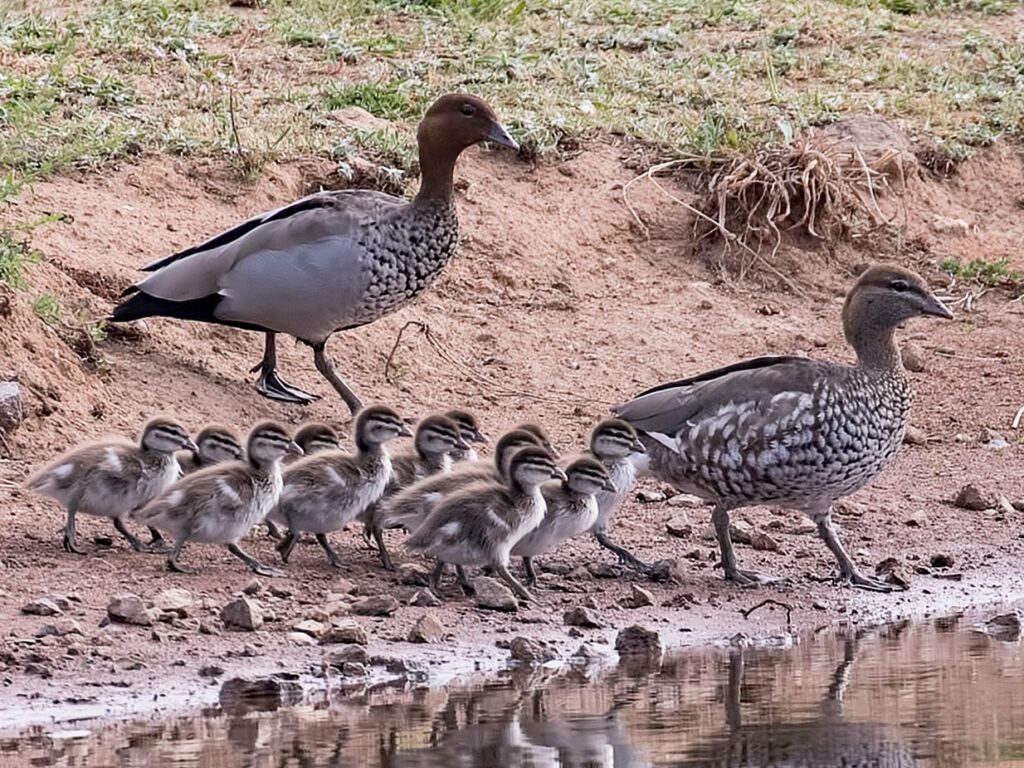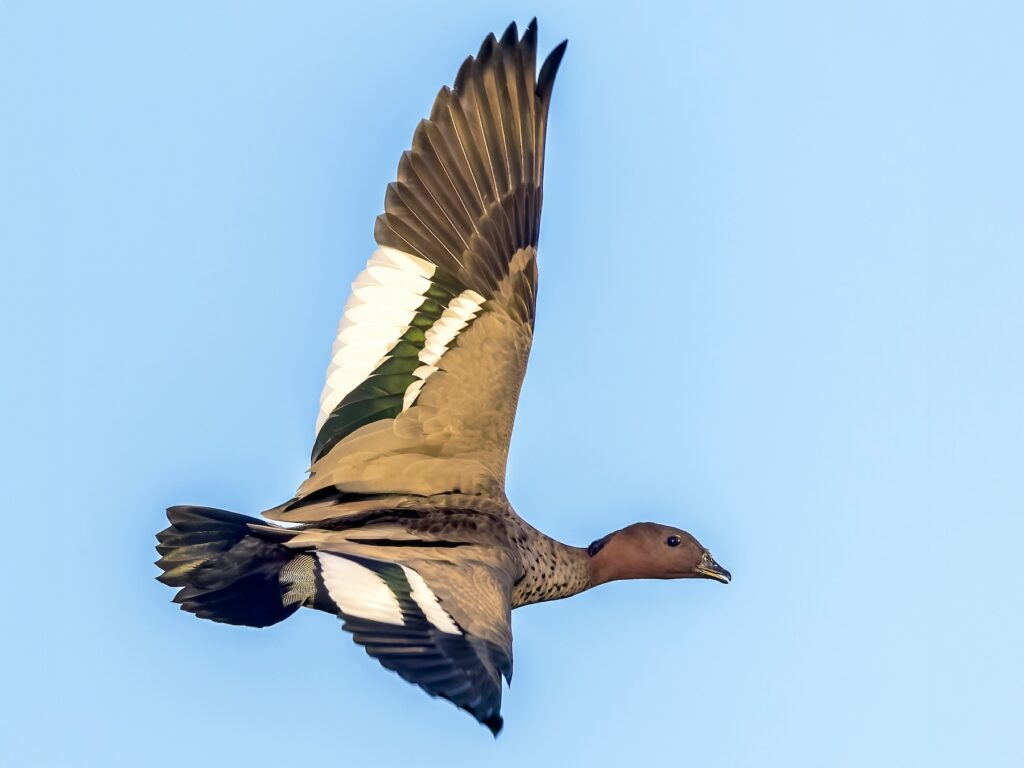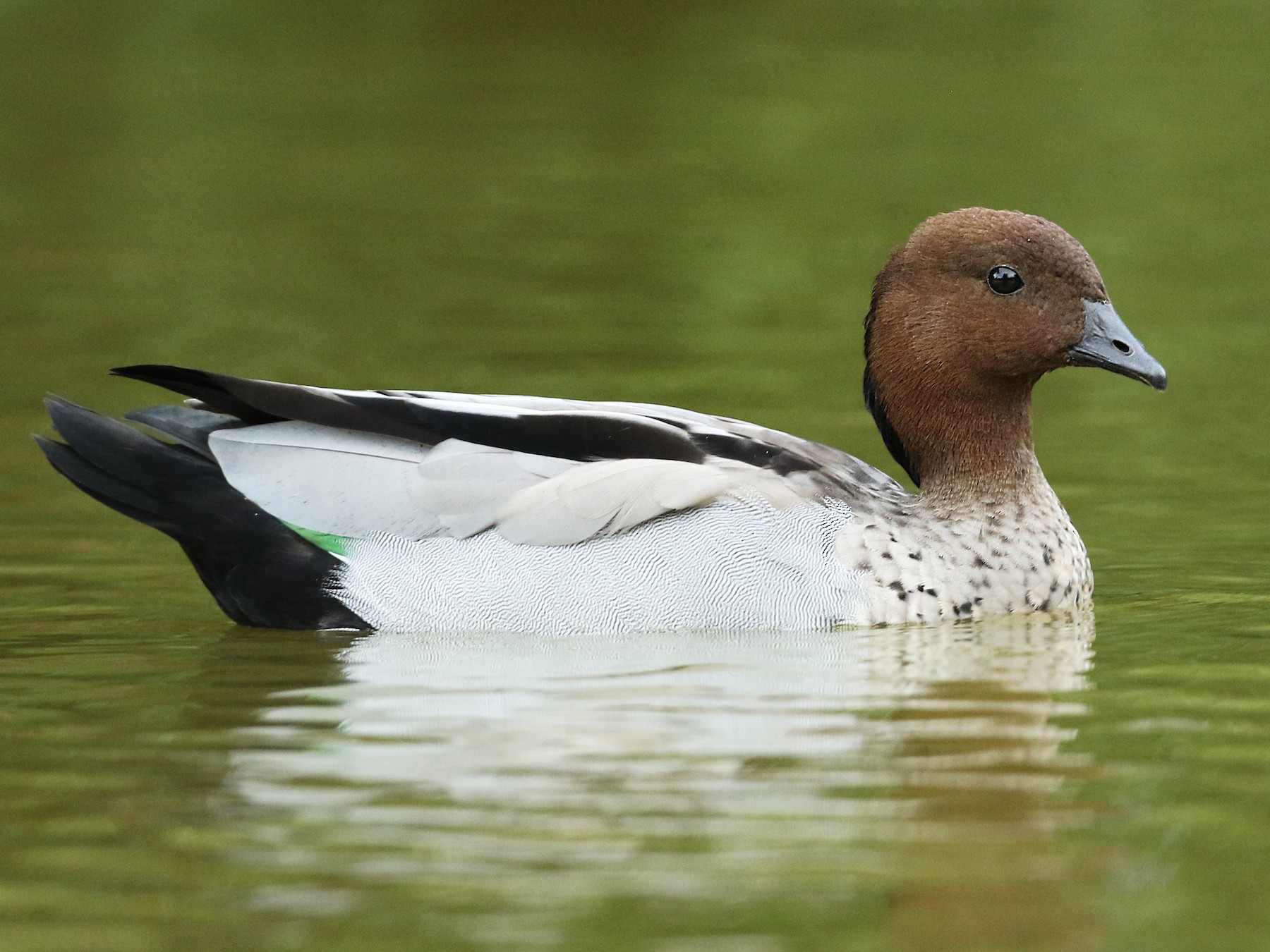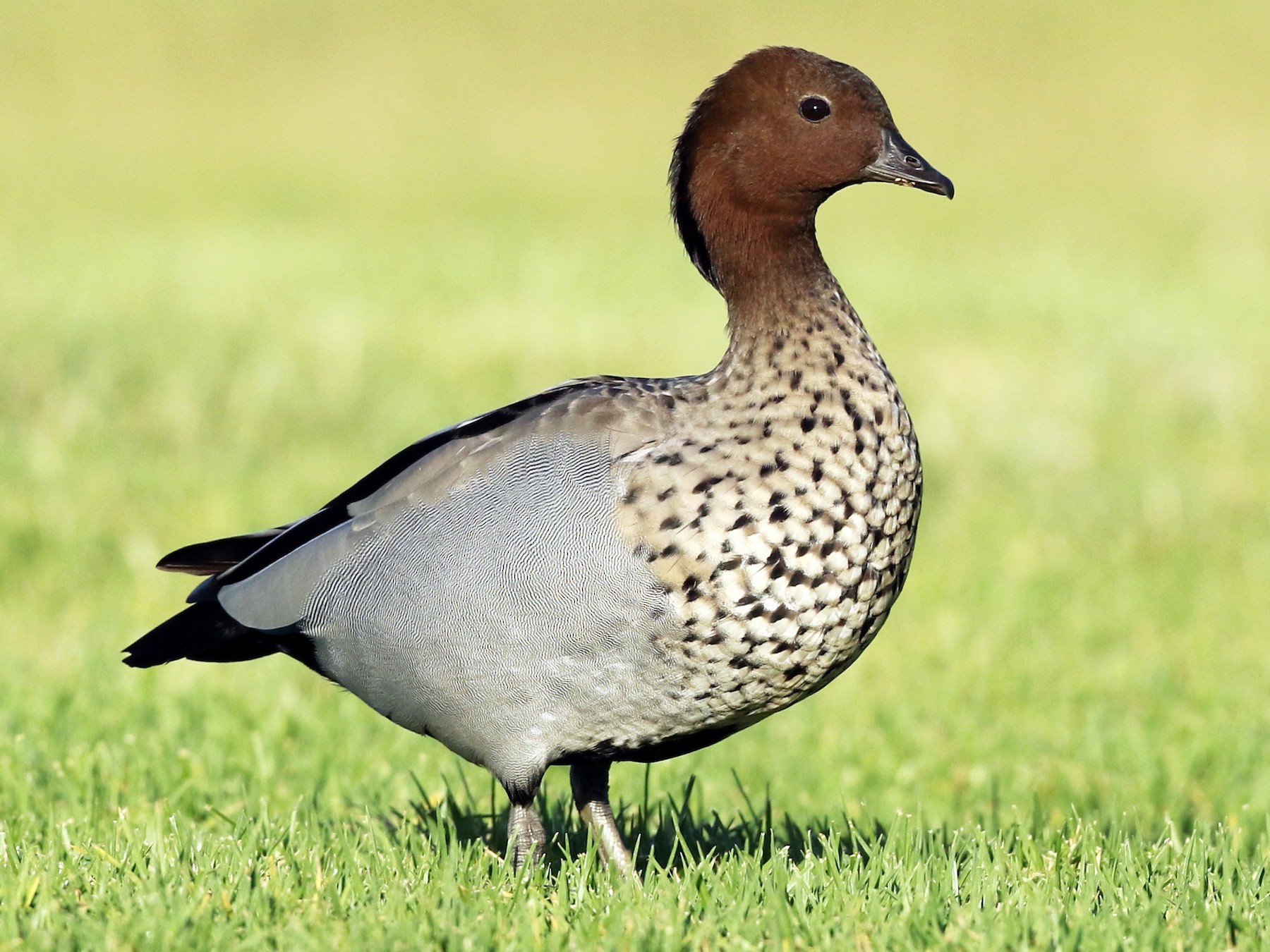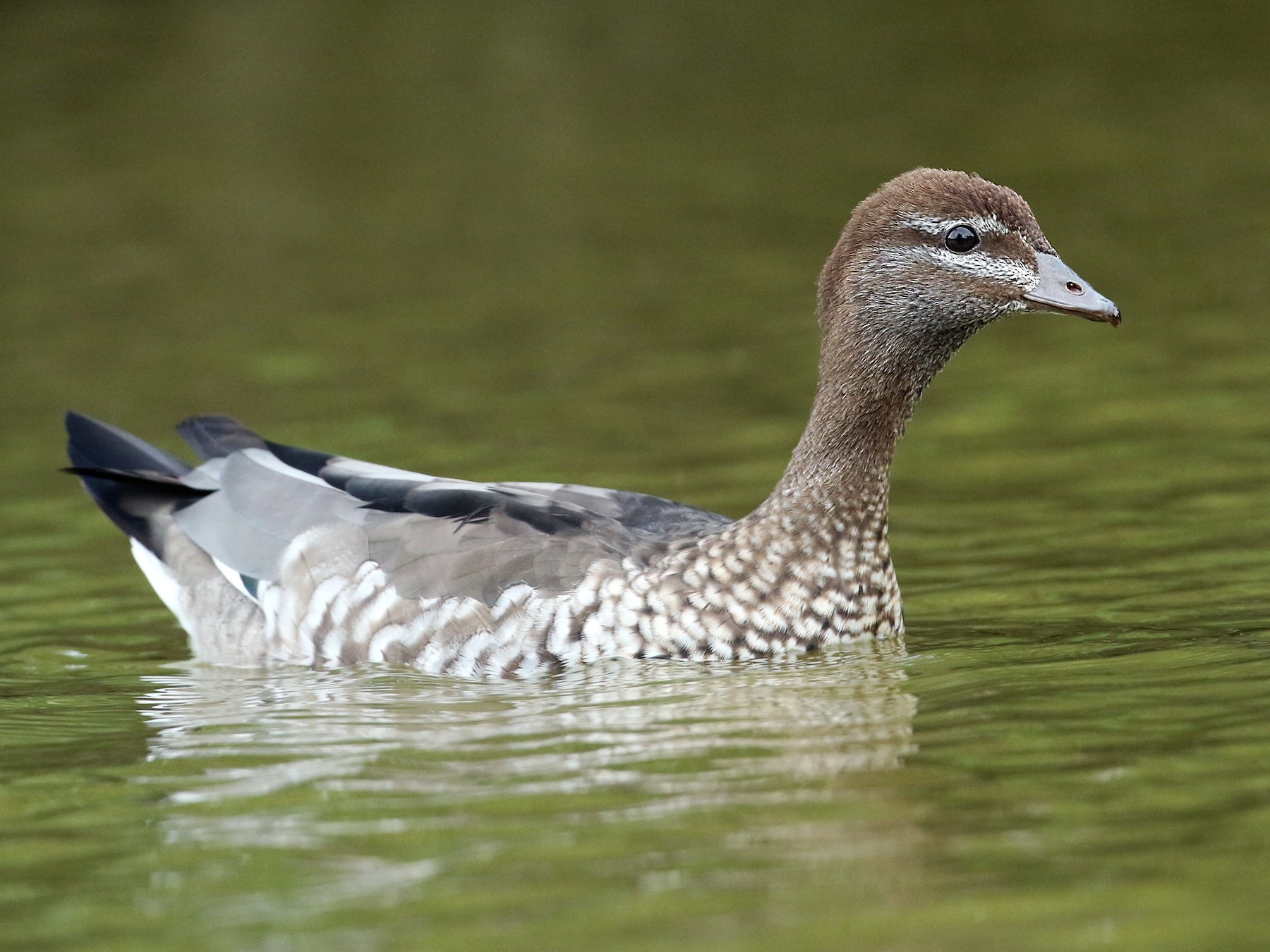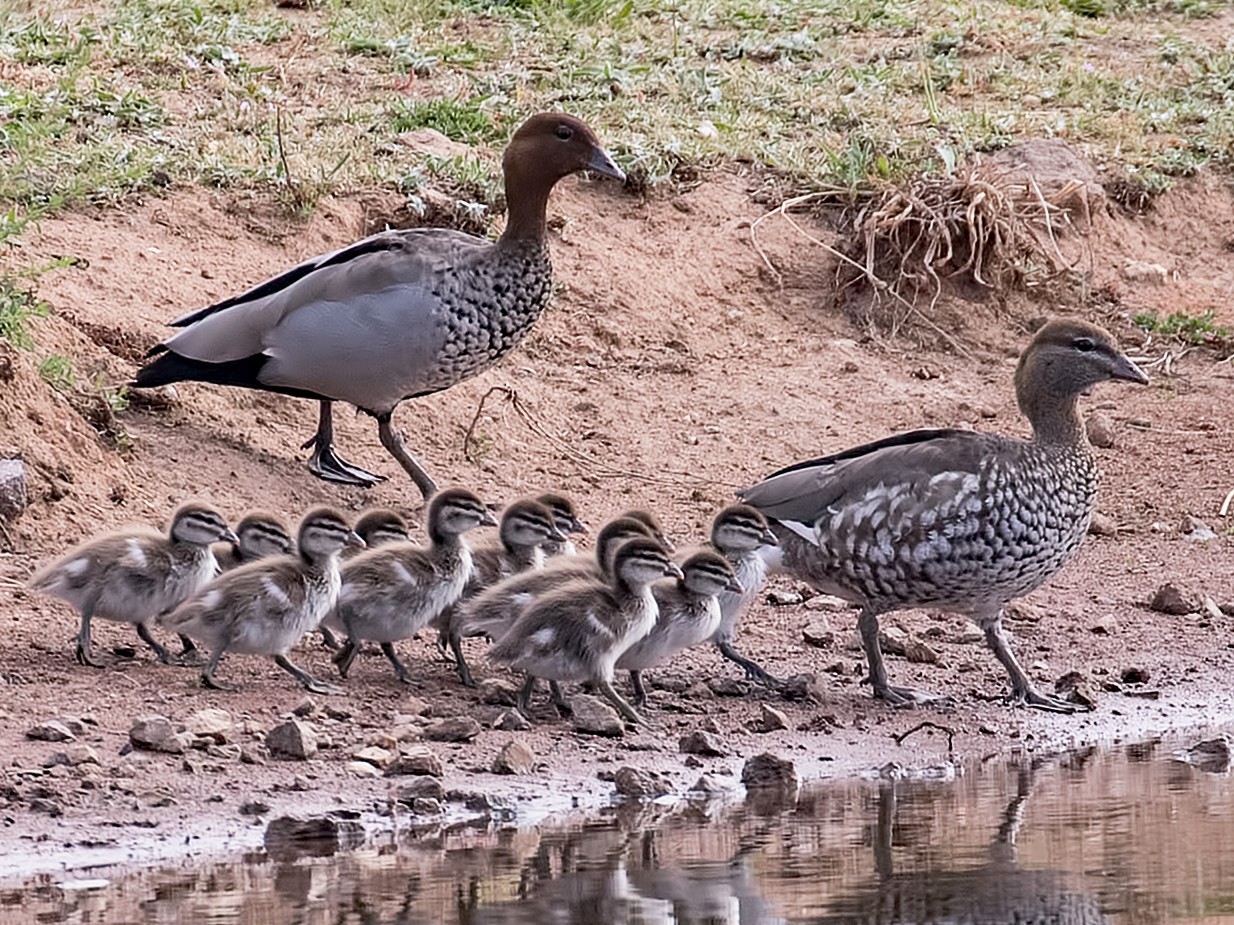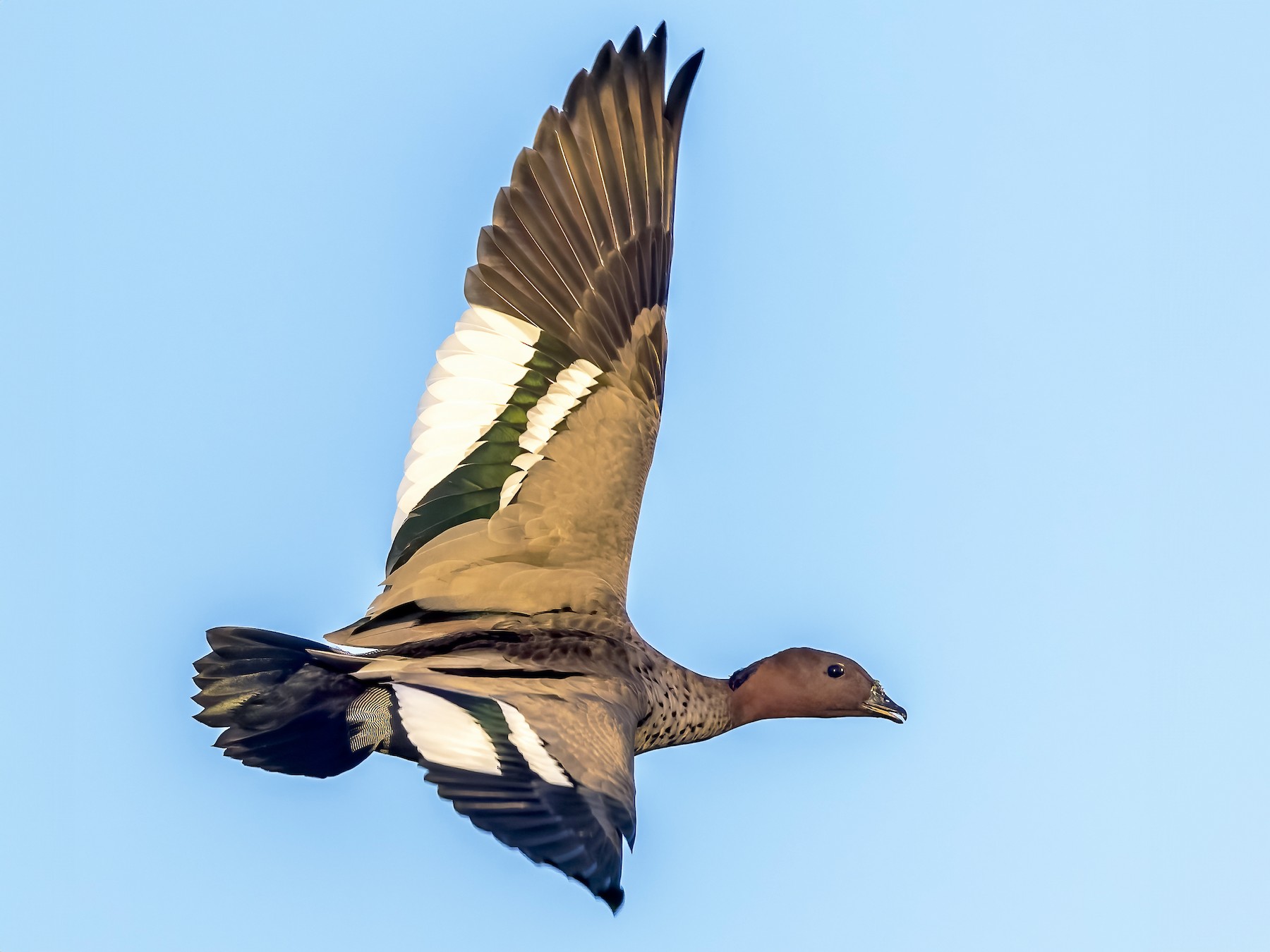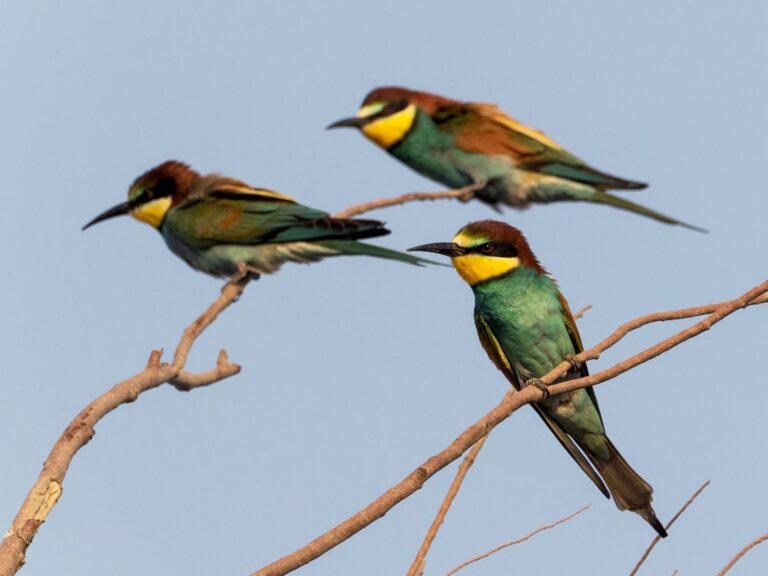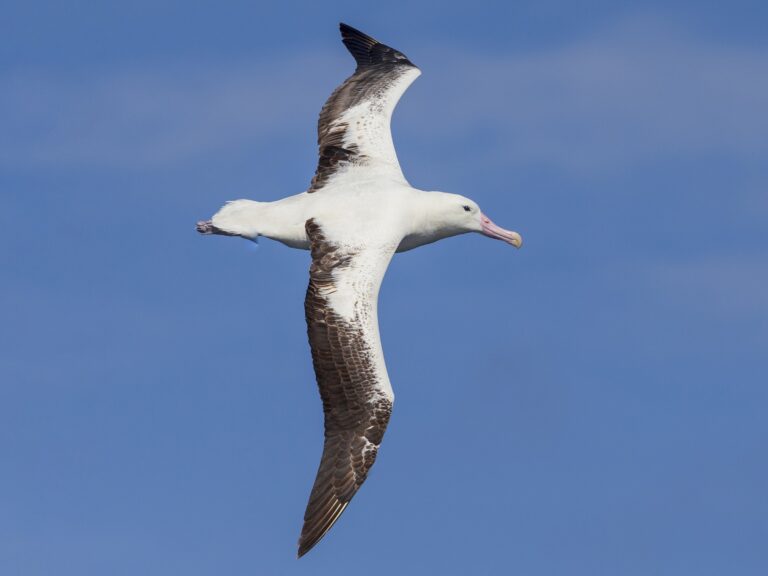Maned Duck: A Fascinating Look at the Uniquely Plumed Australian Waterfowl
The Maned Duck, also known as Chenonetta jubata, is a distinctive species native to Australia. These ducks are recognized for their striking appearance and unique behaviors, making them a fascinating subject for bird enthusiasts and casual observers alike.
Their vibrant plumage and social nature set them apart within their habitats and they thrive near water bodies. Maned Ducks can be found across various environments in Australia. They often favor wetlands and farmlands.
They exhibit interesting social dynamics and are known for their courtship rituals during the breeding season. Conservation efforts are in place to protect these birds, as their habitats face challenges from human activities. Despite pressures such as drought and habitat loss, they continue to adapt and find new places to thrive.
Key Takeaways
- Maned Ducks are unique Australian birds known for their colorful feathers.
- They primarily inhabit wetlands and are adaptable to various environments.
- Conservation efforts are essential for maintaining their populations in the wild.
Sign Up for Our Monthly Newsletter
Every month we send out our newsletter about interesting (and sometimes quirky) things happening in the world of birding. Give it a try!
Taxonomy and Classification
The Maned Duck, scientifically known as Chenonetta jubata, is categorized within the family Anatidae. This section explores its scientific nomenclature, relationships with other species, and classification as a dabbling duck.
Scientific Name and Common Names
The Maned Duck is recognized by its scientific name, Chenonetta jubata. It also goes by several common names, including the Australian Wood Duck and Maned Goose.
The use of “wood duck” can sometimes create confusion with North American wood ducks, but they are different species. This bird is native to Australia and New Zealand and is often found near freshwater sources like lakes, rivers, and wetlands.
Family and Related Species
The Maned Duck belongs to the family Anatidae, which includes all ducks, geese, and swans. Within this family, it is related to several other dabbling ducks. Notable relatives include the Australian Shoveler and Pink-eared Duck.
These birds share common characteristics, like feeding habits and habitat preferences. Their adaptations enable them to thrive in wetland ecosystems. The Maned Duck is sometimes mistaken for other species, but its unique plumage and behavior set it apart.
Classification as a Dabbling Duck
As a dabbling duck, the Maned Duck feeds primarily on the water’s surface rather than diving underwater. It grazes on aquatic plants, seeds, and insects, which are abundant in its habitat.
Dabbling ducks tend to have a more shallow bill compared to diving ducks. This adaptation allows for efficient filtering of food sources. The Maned Duck can often be seen tipping forward while foraging, showcasing its characteristic feeding method.
This behavior is crucial for its survival in various wetland environments throughout Australia. For a more detailed look at the classification and characteristics of ducks, visit this guide.
Physical Description and Identification
The Maned Duck has distinct characteristics that help in identifying its species. Understanding these features is essential for anyone interested in distinguishing this species from others. The following details cover its key physical traits, differences between males and females, and specific color attributes.
Distinguishing Features
Maned Ducks are medium-sized ducks recognized for their unique appearance. They typically have a striking silhouette with a long neck and a slender body. The bill is relatively broad and flat, which aids in foraging.
Their most notable feature is the male’s elaborate mane of elongated feathers. These feathers extend from the back of the head, giving the male its name. The plumage is rich in color, showcasing a mix of brown and gray with intricate patterns.
When viewed in the wild, their overall body structure, combined with these distinctive feather patterns, makes them easy to identify. Photos can help in differentiating these features, aiding in accurate identification.
Male and Female Differences
Male and female Maned Ducks exhibit notable differences, primarily in plumage and size. Males typically possess more colorful feathers compared to females. They have a dark brown head, which is a prominent feature.
Females, on the other hand, exhibit more muted tones of brown and gray, helping them blend into their surroundings. Their overall size is generally smaller than that of males, making them appear less imposing. In terms of behavior, males may display more aggressive postures, especially during breeding seasons.
Understanding these differences is crucial for bird watchers or researchers interested in this species.
Dark Brown Head and Eyes
A key identification mark of the male Maned Duck is its dark brown head and contrasting bright eyes. The head’s color can range from a muted brown to a darker shade during specific seasons.
The eyes are striking, often appearing larger and more vivid in males, enhancing their appeal. This feature plays a significant role in mate attraction, as vibrant eyes are often linked to health and vitality.
When observing these ducks, paying attention to the head and eye color can be helpful in distinguishing sexes and assessing their condition in the wild. Proper identification can improve one’s understanding of their behavior in different environments.
Distribution and Habitat
The Maned Duck is primarily found in specific regions of Australia where it thrives in various habitats. Understanding their native range, preferred habitats, and associated wetland ecosystems provides essential insights into their survival and breeding behaviors.
Native Range in Australia
Maned Ducks are native to eastern and southeastern Australia. They inhabit a wide range of areas, from coastal regions to inland lakes and rivers. Their range typically extends from southern Queensland down to Tasmania and across to Victoria and New South Wales. This duck is adaptable, often seen in agricultural areas as well, primarily where water sources are available.
Preferred Habitats
These ducks prefer habitats that include freshwater lakes, ponds, and marshes. They are commonly found near wetlands where vegetation provides cover for nesting and feeding. Maned Ducks often flock to areas with ample food resources, including aquatic plants and seeds. They are also associated with habitat around agricultural fields, where they can find additional foraging opportunities.
Associated Wetland Ecosystems
Wetland ecosystems play a crucial role in the life cycle of Maned Ducks. These ecosystems support a variety of flora and fauna, which the ducks depend on for food and habitat. They typically nest in dense grasses and reeds near water bodies.
The health of these ecosystems directly impacts the population and distribution of Maned Ducks. Conserving these wetlands is vital for maintaining their habitat and ensuring their survival in the wild. For more details on their habitat and conservation, visit resources such as Distribution and habitat use by mottled ducks in Florida and Breeding ecology of maned ducks.
Behavior and Ecology
The behavior and ecology of the maned duck are closely linked to its feeding habits and nesting practices. This species exhibits unique adaptations that enhance its survival in temperate regions of Australia.
Grazing and Feeding Habits
Maned ducks are primarily herbivorous, feeding on a variety of plant materials. Their diet mainly consists of grass seeds, leaves, and aquatic plants. They use their strong, flat bills to graze on vegetation near water sources.
During feeding, maned ducks often forage in flocks. This social behavior may help them spot predators more easily. They spend a significant amount of time grazing, with some studies noting that ducks can allocate up to 50% of their day to searching for food.
Their feeding habits adapt to seasonal changes. In summer, they prefer tender grasses and seeds, while in winter, they may rely on harder plant materials. For specific food habits of maned ducks, see more detailed studies here.
Nesting and Use of Tree Cavities
Maned ducks typically nest in tree cavities, often created by other birds or natural decay. This choice provides protection from predators and harsh weather conditions. The nesting sites are usually located near water bodies, which help ensure easy access to food and safety for the chicks.
The female lays an average of 8 to 12 eggs, and she incubates them for about 30 days. During this time, the male often guards the territory to deter potential threats. Parents care for the ducklings until they are mature enough to forage and fend for themselves.
The use of tree cavities illustrates the adaptability of maned ducks to their environment. This behavior highlights their ecological role in promoting tree health through nesting activity. For more information about their nesting behavior, refer to research here.
Reproduction and Life Cycle
The reproduction and life cycle of the Maned Duck involve a defined mating season, specific clutch sizes, and attentive parental care for ducklings. Understanding these stages is crucial for studying their ecology and ensuring conservation efforts.
Breeding Season and Mating
The breeding season for Maned Ducks typically occurs from late winter to early spring. During this time, males engage in elaborate displays to attract females. These displays include head bobbing, vocalizations, and distinctive postures.
Once a female selects a mate, they form a pair bond. Maned Ducks are known for being monogamous during the breeding season. They often use the same breeding territory year after year. This stable pairing helps ensure successful reproduction in a suitable environment, minimizing the stress of frequent mate changes.
Clutch Size and Eggs
Maned Ducks usually lay between 6 to 12 eggs per clutch. The eggs are oval and have a creamy white color. Females typically choose concealed areas near water sources for nesting, providing protection from predators.
The nesting sites may include dense vegetation or reeds. After laying the eggs, the female will incubate them for about 28 to 30 days. During this time, she leaves the nest only briefly to feed.
Ducklings and Parental Care
Once the eggs hatch, the ducklings quickly leave the nest and follow their mother. They are precocial, meaning they are capable of swimming and feeding themselves shortly after hatching. The mother plays a critical role in guiding and protecting them during their early days.
She leads the ducklings to water and teaches them foraging skills. Maned Duck mothers are very attentive, keeping their young close and defending them from potential threats.
Conservation and Human Interaction
Conservation efforts for the Maned Duck focus on its status in the wild and challenges in captivity. Legal protections also play a role in addressing human interactions that impact its habitat.
Conservation Status and Threats
The Maned Duck is currently classified as a species of Least Concern by the International Union for Conservation of Nature (IUCN). Despite this favorable status, various threats exist.
Habitat destruction, primarily due to agricultural expansion, poses significant risks. Water pollution also affects their breeding sites, reducing food availability and impacting overall health.
Moreover, climate change is a growing concern. Changes in weather patterns can alter the wetland ecosystems that sustain these ducks. Effective conservation strategies must address both habitat preservation and environmental quality.
Status in Captivity
In captivity, Maned Ducks can thrive if provided with the right conditions. They require spacious enclosures with access to water for swimming and foraging. Captive breeding programs have proven effective in maintaining genetic diversity.
These programs also help educate the public about the species, fostering awareness and support for conservation. However, captive conditions can sometimes lead to behavioral issues if not managed correctly.
Encouraging natural behaviors through enrichment activities is crucial. Successful breeding in captivity can aid in population recovery and serve as a safeguard against potential wild population declines.
Legal Protection and Wildlife Acts
Various legal protections are in place to safeguard the Maned Duck. National and international wildlife acts regulate hunting and trade, ensuring that populations are not exploited.
For example, the Migratory Bird Treaty Act in the United States protects migratory bird species, including the Maned Duck, from illegal hunting. Such legal frameworks are crucial in setting conservation priorities and mobilizing resources for habitat protection.
Efforts to strengthen these laws and increase compliance are vital for the long-term protection of the species. Collaboration among governments, NGOs, and local communities enhances the effectiveness of these legal protections.
Frequently Asked Questions
This section addresses common questions about Maned ducks and related species. It covers their diet, physical differences between genders, breeding habits, relationships with other ducks, habitat preferences, and conservation impacts.
What is the diet of the Australasian shoveler?
The Australasian shoveler primarily feeds on small invertebrates, seeds, and aquatic plants. They use their unique shovel-shaped bills to filter food from the water. This diet varies with the seasons, adjusting to food availability.
How can you differentiate between male and female Maned ducks?
Male Maned ducks are easily identifiable by their striking plumage, featuring a dark head and white neck patch. In contrast, females are mostly brown and have a less vibrant appearance, making them blend into their surroundings.
What are the breeding habits of the Pacific Black Duck?
Pacific Black Ducks typically breed in the spring and summer. They nest near water, often in tall grass or reeds. The female lays around 8 to 12 eggs, which she incubates alone for about 28 days.
Are Mandarin ducks related to Maned ducks?
Mandarin ducks and Maned ducks belong to the same family, Anatidae, but they are different species. While both are dabbling ducks, they have distinct behaviors and habitats, making their direct relationship minimal.
What is the typical habitat for dabbling ducks?
Dabbling ducks, including Maned ducks, prefer shallow lakes, ponds, and wetlands. They often inhabit areas with abundant vegetation for food and cover. These habitats provide essential resources for nesting and feeding.
How do conservation efforts impact the population of Black ducks?
Conservation efforts aim to protect habitats and regulate hunting. By preserving wetland areas and implementing sustainable practices, these efforts help maintain ecological balance and support declining populations.
